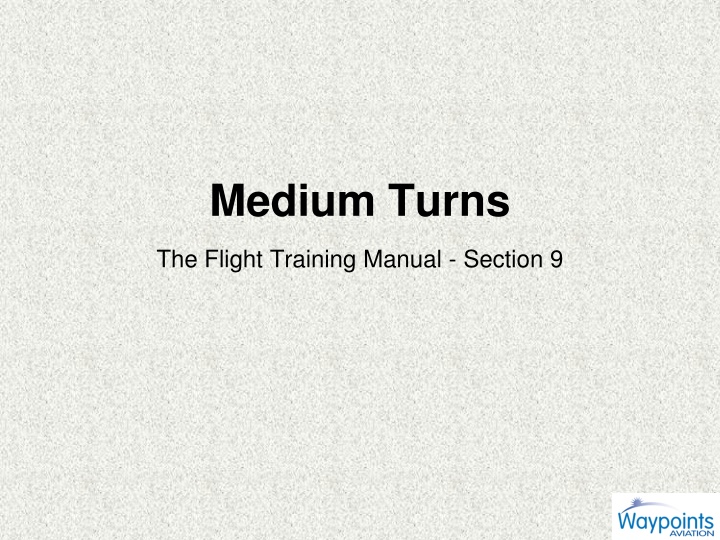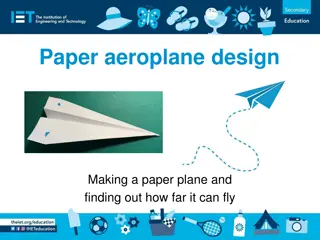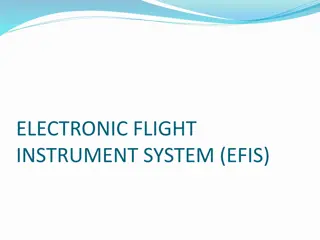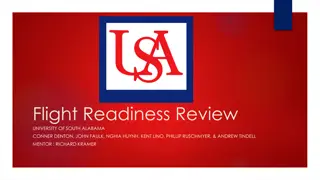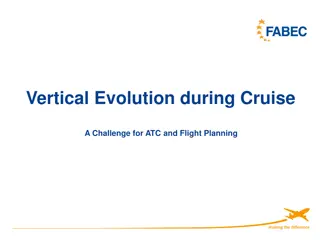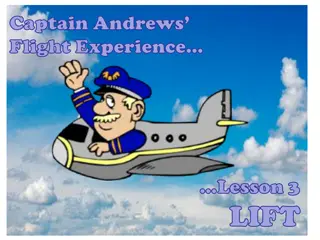Medium Turns Flight Training Manual Section 9
Learn how to execute medium turns in flight training, changing direction through 360 degrees at a constant rate while maintaining altitude and balance. Understand the principles of lift, adverse yaw, and overbanking performance involved in medium turns, along with techniques to reduce adverse yaw and maintain balance during roll.
Download Presentation

Please find below an Image/Link to download the presentation.
The content on the website is provided AS IS for your information and personal use only. It may not be sold, licensed, or shared on other websites without obtaining consent from the author.If you encounter any issues during the download, it is possible that the publisher has removed the file from their server.
You are allowed to download the files provided on this website for personal or commercial use, subject to the condition that they are used lawfully. All files are the property of their respective owners.
The content on the website is provided AS IS for your information and personal use only. It may not be sold, licensed, or shared on other websites without obtaining consent from the author.
E N D
Presentation Transcript
Medium Turns The Flight Training Manual - Section 9
Objectives To change direction through 360 degrees at a constant rate (30 angle of bank), while maintaining a constant altitude, and keeping the aeroplane in balance. To complete a medium turn while climbing and while descending.
Principles of Flight Lift Adverse Yaw Overbanking Performance
Lift Lift Lift Equals Weight Weight Straight and Level
Lift Lift HCL CPF 30 Weight Turning Force Provided by Tilting Lift (Bank) Horizontal Component of Lift (Centripetal Force)
Lift VCL Lift HCL CPF Weight Vertical Component of Lift is Less than Weight
Lift VCL Lift HCL CPF Weight Lift is Increased Vertical Component of Lift is equal to Weight
Lift How is lift increased in the Medium Level Turn? L AoA X IAS Lift is to be increased Power is to remain constant (IAS nearly constant) Increase the AoA (slight back pressure) Increasing the AoA will increase the Lift and ???? DRAG A small (5kt) decrease in IAS
Adverse Yaw To produce roll, the Ailerons are deflected: One Aileron goes down (increasing Lift, wing rises) The other goes up (decreasing Lift, wing descends) With a change in Lift there is a change in Drag (Induced) Yaw in the opposite direction Apply same-side Rudder
Adverse Yaw Methods of Reducing Differential Frise
Adverse Yaw How Much Rudder? Depends on rate of roll (how much aileron is deflected) Rapid Roll requires more rudder Same Roll Rate at Low Airspeed (Descending Turn) requires more rudder When ailerons centralised reduce rudder pressure to maintain balance
Overbanking Outer Wing: Travels further in the same time Travels faster L = AoA x IAS Increased Lift on outer wing tends to produce roll into the turn; Overbanking Maintain the Angle of Bank with Aileron; Hold Off
Performance Climbing Turn In a climb, performance is determined by the excess of power/thrust. Combining a turn with a climb Lift is tilted, Drag is increased, Excess of power decreases, Rate of Climb reduces Use AOB 20 Lift Thrust Weight
Performance Descending Turn Combining a turn with a descent Lift is tilted, Drag is increased, Rate of Descent increases Use AOB 20 Lift Drag Weight
Airmanship LOOKOUT 2 seconds per 20 Start at the tail on the opposite side to the turning direction Continue forward passed the nose to the tail on the side of the turn. Continue looking into the turn LISTEN-OUT Develop mental picture of other aircraft s positions and intentions When are you being called? When to call?
Airmanship Situational Awareness Position: Monitor position with respect to the training area and other traffic 360 Degree Turns: To maintain position in the training area Altitude: Minimum altitudes (height AGL) Maximum altitudes (controlled airspace) Weather: Cloud and Visibility VFR Wind?
Aeroplane Management Throttle Positive and smooth movements Carb Heat Apply when needed RPM below 2000RPM Climb: Not used. Reduces engine performance and therefore climb performance. Descent: Select Carb Heat HOT prior to reducing power. Difficult to detect Carb Icing at low power settings, and with a closed throttle means a greater chance of it occurring. Temperatures and Pressures (T s & P s ) In the Normal Range (Green)
Human Factors Disorientation Turns practised through 360 degrees to minimise Choose an easily identified reference point as an anchor. Turning Sensation May feel uncomfortable at first Tendency to lean into the turn Body trying to realign with the perceived vertical A slight increase in weight (G Force) pushed into the seat.
Air Exercise Adverse Yaw Demonstration Only Feet off the rudder pedals Look straight ahead Note the movement of the nose against the horizon
Air Exercise Entry Lookout, Reference Point (DI), Reference Altitude Bank Ailerons Smoothly roll into turn, 30 AOB Balance Rudder In same direction Pitch Elevator Slight back pressure to maintain height (1 finger)
Air Exercise In the Turn When 30 AOB achieved Aircraft Attitude Slight check of Aileron and Rudder to maintain Scan L A I LOOKOUT Attitude Instruments Angle of Bank Altitude Into the turn 30 AOB and level flight (Horizon) Confirm (Altimeter, AH, Ball) Controlled with Aileron Controlled with Elevator Do Not Trim
Air Exercise Exit LOOKOUT Into the Turn, Look for Reference Point Anticipate rollout by 1/3 Angle of Bank (10 ) Bank Aileron Smoothly roll wings level Balance Rudder In same direction Pitch Elevator Relax Reset Straight and Level attitude Check Power Attitude Trim
Air Exercise Climbing Turn Entry Establish the Climb Lookout Bank Ailerons 20 AOB Balance Rudder Pitch Relax to maintain attitude for climb speed
Air Exercise Descending Turn Entry Establish the Descent Lookout Bank Ailerons 20 AOB Balance Rudder Pitch Relax to maintain attitude for descent speed
